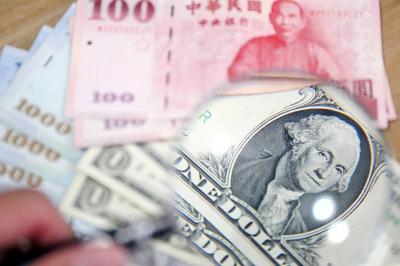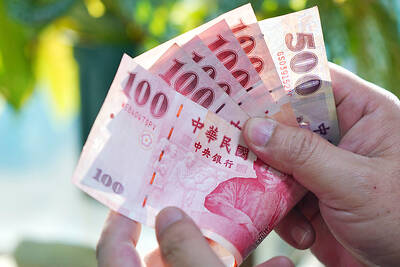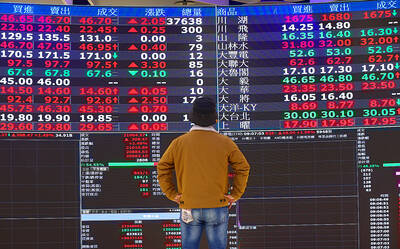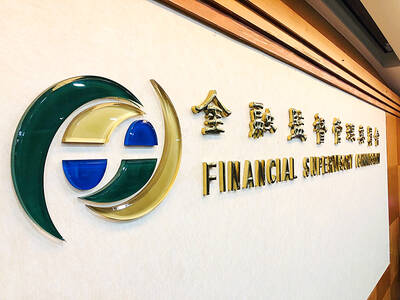A two-month global equity rally that has added US$8.8 trillion to stocks may continue in the short term as risk aversion declines and investors overreact to improving economic data, CLSA Ltd’s Christopher Wood said.
In the longer term, buyers of US shares are likely to suffer as the prospects of a swift recovery dim, Institutional Investor’s No. 1-ranked strategist wrote in a report. Asian and emerging market stocks, especially Taiwan, have the potential to become the next asset bubble, he said.
“The risk will continue to be that investors will interpret improving month-on-month data more bullishly than is really justified,” Wood wrote.
The “fundamental view remains that growth will disappoint in the US,” he wrote.
Taiwan, which is opening up to investment from China, has the “greatest potential” for an asset bubble with “seemingly stupid equity valuations,” Wood said.
Taiwan’s TAIEX index is the second-best performer in Asia this year behind China.
Japan, with national debt more than double the size of its economy, could be the first country to experience hyperinflation as a result of ballooning deficits, he said. Thus, investors should hold property that will benefit from such inflation.
Wood predicted in 2003 the explosion of mortgage securitization in the US would lead to a boom and bust for the housing market. In September 2007, he began recommending investors sell banks in the US and Europe.
The MSCI World Index of equities in 23 developed nations has soared 34 percent since March 9. The MSCI Emerging Markets Index has rallied 46 percent in the same period.
Wood’s stance echoes that of investor Marc Faber, publisher of The Gloom, Boom & Doom Report. Faber said in an interview with reporters on Wednesday that the deficit and monetization policies of governments and central banks around the world will lead to inflation, making equities and hard assets such as gold and agriculture more attractive than bonds.
The US Federal Reserve has doubled the size of its balance sheet in the last year to US$2.2 trillion as it prints money to purchase assets such as mortgage backed securities and government bonds. Government and central bank spending and guarantee pledges in the US soared to US$12.8 trillion as of the end of March, a level nearing the nation’s annual economic output.
These actions should benefit risk appetite in the near term, though they may eventually lead to the collapse of the dollar, Wood said.
“The inevitable long-term consequence of this reluctance to allow failure will be the discrediting of the fiat paper currency system as public sector balance sheets are finally totally discredited along with so called government guarantees,” Wood said.

The US dollar was trading at NT$29.7 at 10am today on the Taipei Foreign Exchange, as the New Taiwan dollar gained NT$1.364 from the previous close last week. The NT dollar continued to rise today, after surging 3.07 percent on Friday. After opening at NT$30.91, the NT dollar gained more than NT$1 in just 15 minutes, briefly passing the NT$30 mark. Before the US Department of the Treasury's semi-annual currency report came out, expectations that the NT dollar would keep rising were already building. The NT dollar on Friday closed at NT$31.064, up by NT$0.953 — a 3.07 percent single-day gain. Today,

‘SHORT TERM’: The local currency would likely remain strong in the near term, driven by anticipated US trade pressure, capital inflows and expectations of a US Fed rate cut The US dollar is expected to fall below NT$30 in the near term, as traders anticipate increased pressure from Washington for Taiwan to allow the New Taiwan dollar to appreciate, Cathay United Bank (國泰世華銀行) chief economist Lin Chi-chao (林啟超) said. Following a sharp drop in the greenback against the NT dollar on Friday, Lin told the Central News Agency that the local currency is likely to remain strong in the short term, driven in part by market psychology surrounding anticipated US policy pressure. On Friday, the US dollar fell NT$0.953, or 3.07 percent, closing at NT$31.064 — its lowest level since Jan.

The New Taiwan dollar and Taiwanese stocks surged on signs that trade tensions between the world’s top two economies might start easing and as US tech earnings boosted the outlook of the nation’s semiconductor exports. The NT dollar strengthened as much as 3.8 percent versus the US dollar to 30.815, the biggest intraday gain since January 2011, closing at NT$31.064. The benchmark TAIEX jumped 2.73 percent to outperform the region’s equity gauges. Outlook for global trade improved after China said it is assessing possible trade talks with the US, providing a boost for the nation’s currency and shares. As the NT dollar

The Financial Supervisory Commission (FSC) yesterday met with some of the nation’s largest insurance companies as a skyrocketing New Taiwan dollar piles pressure on their hundreds of billions of dollars in US bond investments. The commission has asked some life insurance firms, among the biggest Asian holders of US debt, to discuss how the rapidly strengthening NT dollar has impacted their operations, people familiar with the matter said. The meeting took place as the NT dollar jumped as much as 5 percent yesterday, its biggest intraday gain in more than three decades. The local currency surged as exporters rushed to